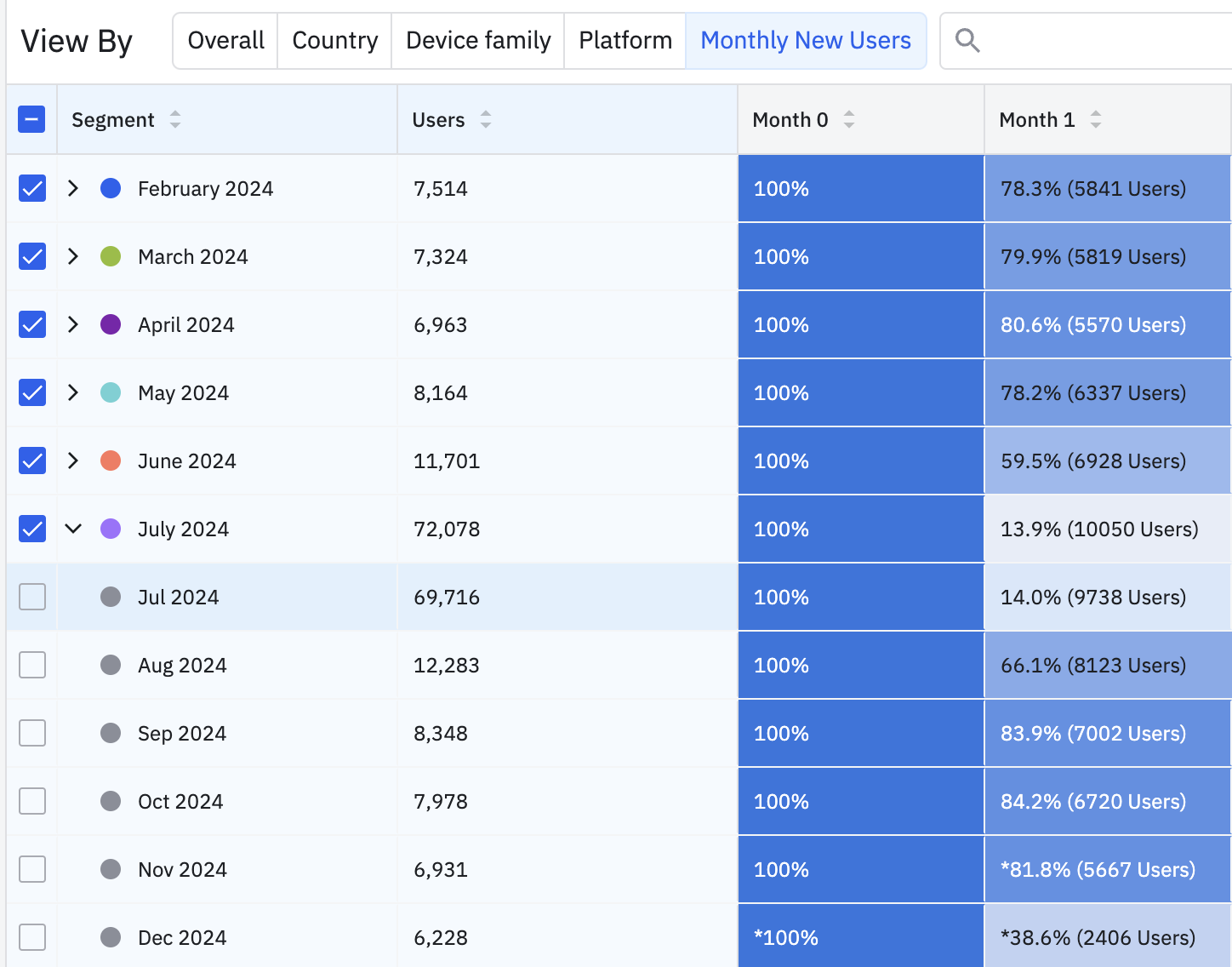Hi, I am struggling to understand the following breakdown in the Monthly New Users view in the new retention chart.
My understanding is that for July 2024, there are 72078 new users. But I am having trouble understanding what the breakdown of Jul 2024, Aug 2024, Sep 2024, etc mean? Does it mean that out of the 72078 new users from July 2024, 12283 of them came back in Aug 2024? I don’t think this is correct because on the July 2024 overall row, it shows in Month 1 there are 10050 users. And if this is the case Jul 2024 should match the overall row. Does anyone know what’s the correct interpretation?
